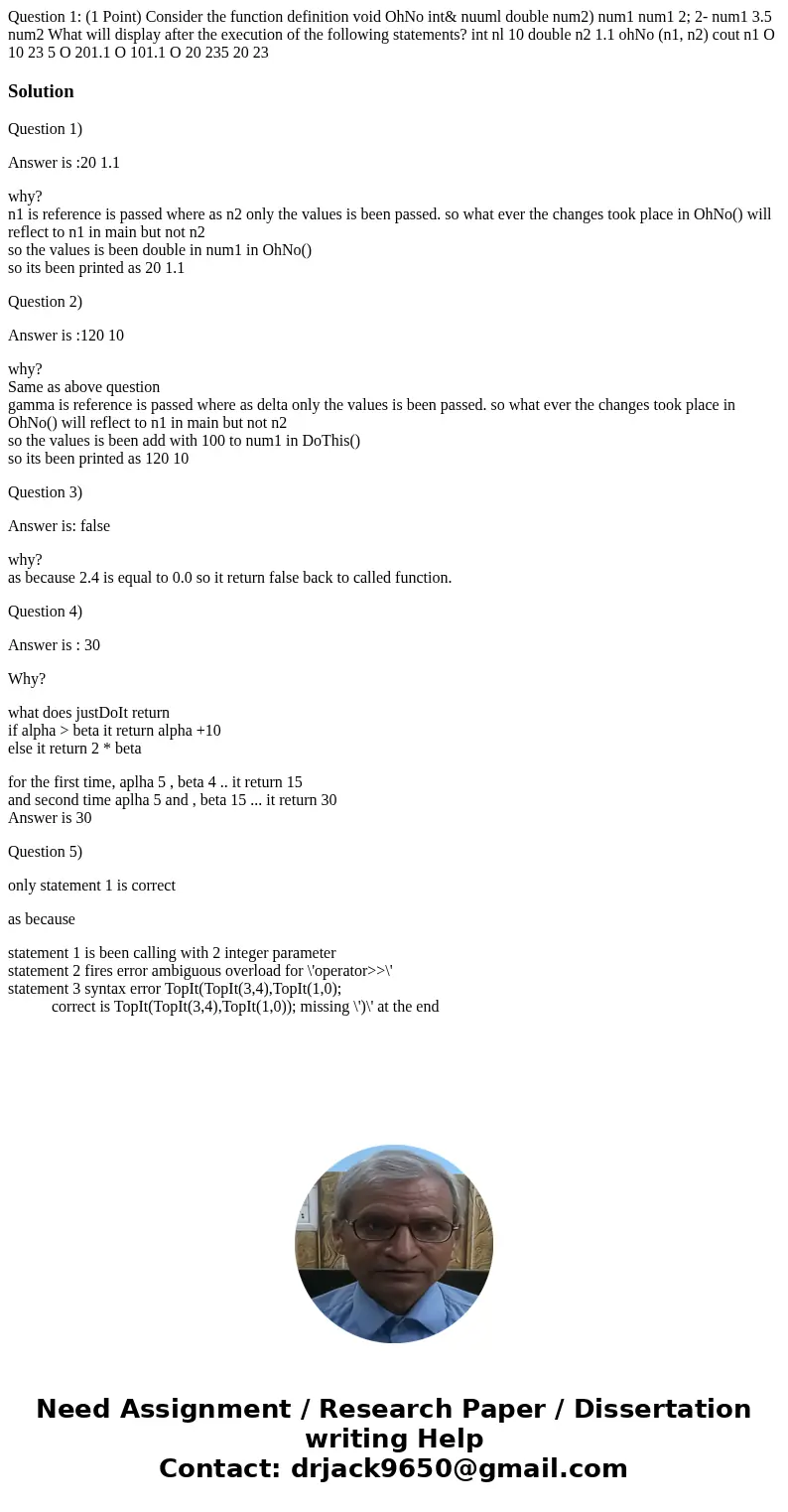Question 1 1 Point Consider the function definition void OhN
Solution
Question 1)
Answer is :20 1.1
why?
n1 is reference is passed where as n2 only the values is been passed. so what ever the changes took place in OhNo() will reflect to n1 in main but not n2
so the values is been double in num1 in OhNo()
so its been printed as 20 1.1
Question 2)
Answer is :120 10
why?
Same as above question
gamma is reference is passed where as delta only the values is been passed. so what ever the changes took place in OhNo() will reflect to n1 in main but not n2
so the values is been add with 100 to num1 in DoThis()
so its been printed as 120 10
Question 3)
Answer is: false
why?
as because 2.4 is equal to 0.0 so it return false back to called function.
Question 4)
Answer is : 30
Why?
what does justDoIt return
if alpha > beta it return alpha +10
else it return 2 * beta
for the first time, aplha 5 , beta 4 .. it return 15
and second time aplha 5 and , beta 15 ... it return 30
Answer is 30
Question 5)
only statement 1 is correct
as because
statement 1 is been calling with 2 integer parameter
statement 2 fires error ambiguous overload for \'operator>>\'
statement 3 syntax error TopIt(TopIt(3,4),TopIt(1,0);
correct is TopIt(TopIt(3,4),TopIt(1,0)); missing \')\' at the end

 Homework Sourse
Homework Sourse